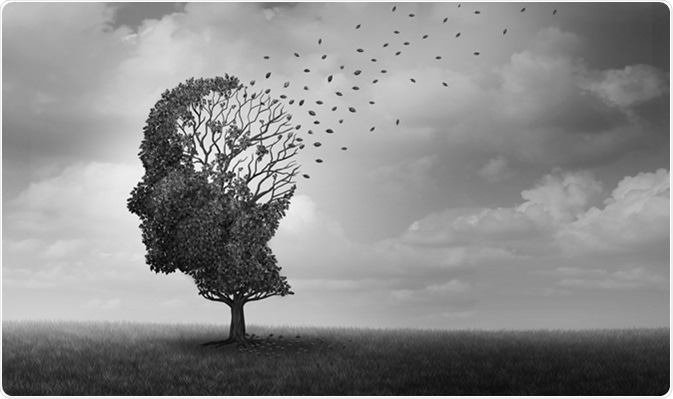Amnesia, or memory loss, can be transient or chronic (long-term). It can also have a sudden onset, or gradual and progressive onset, as in the case of dementia.
With age, most people tend to display some level of memory impairment. In some cases, memory loss in not of a major concern and can be attributed to stress, anxiety, depression or insomnia. However, when memory loss interferes with activities of daily living, a more careful evaluation is warranted, as this may be indicative of early-stage dementia.

Image Credit: Lightspring / Shutterstock
How is amnesia assessed clinically?
Assessment and diagnosis of amnesic states usually involve a detailed look at medical and mental health history of the patient. Many patients presenting with amnesia may also suffer from other conditions like stress, anxiety or depression. A detailed family history of dementia including Alzheimer’s disease is also enquired. Patients are also assessed for confusion, trouble in decision making and judgment errors to assess whether the amnesia is present with other cognitive impairments indicative of dementia.
During clinical assessment, questions are usually asked regarding the frequency of memory lapses, types of things forgotten, repetition of same phrases or questions in the same conversation, as well as the frequency of forgetting routine tasks like brushing, bathing etc. These questionnaires may be directed to the patients or family members or carers if the memory loss is more severe.
Amnesia can come in two forms, anterograde or retrograde. Anterograde amnesia, or the loss of memory about events that occurred before a specific experience, or retrograde amnesia, the loss of memory about events that occurred soon after a specific experience can be differentiated and detected.
History of triggering factors is enquired. This includes history of head injury in the recent past, an emotionally traumatic event in the recent past, recent requirement of a surgery under general anaesthesia, history of illicit drug or alcohol abuse.
A detailed physical examination is performed next to assess for different causes of amnesia.
For example, in Korsakoff’s psychosis that occurs due to long term alcohol abuse also leads to numbness and loss of sensation in the fingers and toes.
There is also a symptom of confabulation in Korsakoff’s psychosis when patient fills up gaps in their memory by making up information.
The Man With The Seven Second Memory (Amnesia Documentary) | Real Stories
Tests for Amnesia
In addition to a clinical evaluation of memory impairment through the form of questionnaires, a clinician may also run additional physiological tests to determine the severity of the amnesic state.
The most important method of diagnosis includes psychometric tests or cognitive tests.
There are numerous tools that are can be used to diagnose amnesia. These involve series of special questionnaires and/or verbal, audio-visual or visual tests to detect the extent of the memory loss.
The most used tool is the Mini Mental State Examination (MMSE). It is most commonly used to diagnose memory loss. Another test is the Six Item Cognitive Impairment Test (6CIT) or the Kingshill test. For memory loss related to aging especially in the hospital settings commonly used test is the Abbreviated Mental Test (AMT).
In addition to a clinical evaluation of amnesia, metabolic tests and imaging may also be used to diagnose the cause of the amnesia. Blood tests may be performed to test for various circulating biochemical factors that may be indicative of pathology. For example, tests can be performed to test for low thyroid function by quantitating relative levels of thyroid hormone. Low vitamin B12 may also be detected by blood tests, which may also be an important biomarker for amnesia.
Routine blood tests assessing total blood count, liver and kidney functions are often prescribed for the diagnosis of the cause of memory loss.
A CT scan or MRI scan of the brain is often prescribed in addition to other tests. This is done to detect structural or functional lesions that may be causative in amnesia, for example, a stroke, bleeding inside the brain or a head injury (TBI) that may have led to amnesia.
Other tests for amnesia may also include cerebral angiography, and cardiovascular tests.
In a cerebral angiography, an injection of a special dye via a vein in the arm is prescribed. This travels to the blood vessels of the brain and the image is recorded. This gives an indication regarding a bleed within the brain or a stroke that may have led to the memory loss.
Other imaging studies include magnetoencephalography (MEG) and PET scans. EEG or electroencephalogram are often used to detect abnormal electric activities in the brain, which can be diagnostic/indicative of epilepsy, or other neural disorders.
If a brain infection is suspected, in addition to any other brain pathology, cerebrospinal fluid (CSF) may be extracted by a lumbar puncture (small needle in the spine), to assess the levels of various compounds circulating in the brain.
Further Reading